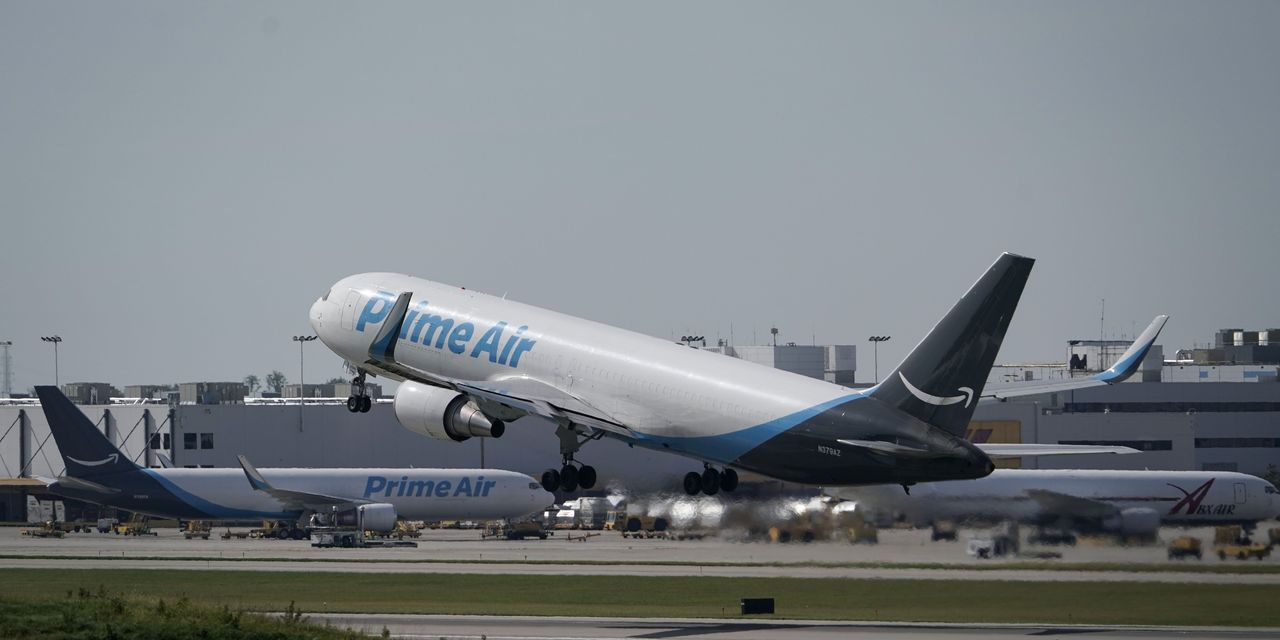

There is nothing like a pandemic and a European war to highlight the value of logistics.
com’s growing fleet of planes shows that it is investing hard to deliver—probably at the expense of
and DHL.
Amazon’s cargo airline currently makes an average of 187 flights a day, compared with 85 in May 2020, according to a biannual analysis led by Joseph Schwieterman, a professor at DePaul University, published late Tuesday.
Since the Covid-19 crisis started, e-commerce purchases have skyrocketed and a lot of belly-hold space in planes has been removed. Many airfreight companies have seized the opportunity to grow and, as this column predicted in early 2020, Amazon has taken the lead. It now has more than 80 jets—less than DHL’s 202, UPS’ 289 and FedEx’s 474 but a lot more than the 50 it had at the start of 2020.
Even that may be an underestimate. Amazon doesn’t operate its flights, instead relying on partners such as
Mr. Schwieterman believes that the real in-service fleet figure may be above 110 planes. Some partner flights don’t sport the Amazon Air tail but, based on their routes, he thinks they are probably still servicing the e-commerce company.
This seems to be a feature of its European push, which started in 2020 through a collaboration with Ireland’s ASL Airlines. He estimates that daily flights in Europe have grown from 8.2 on average last August to three dozen now, with these “shadow flights” amounting to some two-thirds of the total, up from a handful.
Having previously leased its planes, Amazon started buying some last year as a flood of parked jets entered the secondhand market and freighter conversions surged. It has also taken equity stakes in ATSG and has warrants on the stock of
This strategy of building extra flexibility and control may herald more encroachment on the territory of FedEx and UPS. Amazon already provides some “third party” services to companies, and could soon start competing head-to-head in business-to-consumer deliveries.
“It’s more than a baby step in their delivery system: It’s a strategic move that opens the door to a whole new set of revenue sources,” Mr. Schwieterman said.
Even after spending heavily on its own vans, trucks and warehouses, Amazon still relies on traditional logistics firms to deliver a lot of packages, which makes for a strained partnership. But the company hasn’t used its planes much to compete directly with the likes of UPS. It typically flies inventory between warehouses on daytime flights, with a focus on two-day delivery.
There are clues that this may be changing. Routes seem increasingly designed not just to align with warehouse needs but also to close geographical gaps. The report estimates that 73% of the U.S. population is now within 100 miles of an Amazon Air airport, versus 54% in May 2020. Late flights from Amazon’s Wilmington Air Park hub, as well as the addition of ATR 72 turboprops to the fleet last year, also point to an ambition to match the fleet to consumer schedules. Next-day delivery often involves smaller planes making overnight trips.
Media reports suggest that long-haul
777 and
A330 planes could also be incorporated into Amazon’s fleet. They could potentially be used to source products from manufacturers across oceans.
A rule of thumb among business academics is that companies have good reason to buy a supplier when sourcing a product is subject to a lot of uncertainty. With uncertainty today pervading the entire global supply chain, Amazon’s logistics ambitions seem ready for takeoff.
Write to Jon Sindreu at jon.sindreu@wsj.com
Copyright ©2022 Dow Jones & Company, Inc. All Rights Reserved. 87990cbe856818d5eddac44c7b1cdeb8
Appeared in the March 17, 2022, print edition as ‘Supply-Chain Obsession Is a Gift for Amazon Air.’
24World Media does not take any responsibility of the information you see on this page. The content this page contains is from independent third-party content provider. If you have any concerns regarding the content, please free to write us here: contact@24worldmedia.com

Common Mistakes When Using Athletic Field Tarps

High-Performance Diesel Truck Upgrades You Should Consider

Warehouse Optimization Tips To Improve Performance

Fire Hazards in Daily Life: The Most Common Ignition Sources

Yellowstone’s Wolves: A Debate Over Their Role in the Park’s Ecosystem

Earth Day 2024: A Look at 3 Places Adapting Quickly to Fight Climate Change

Millions of Girls in Africa Will Miss HPV Shots After Merck Production Problem

This Lava Tube in Saudi Arabia Has Been a Human Refuge for 7,000 Years

Four Wild Ways to Save the Koala (That Just Might Work)

National Academy Asks Court to Strip Sackler Name From Endowment

Ways Industrial Copper Helps Energy Production

The Ins and Out of Industrial Conveyor Belts